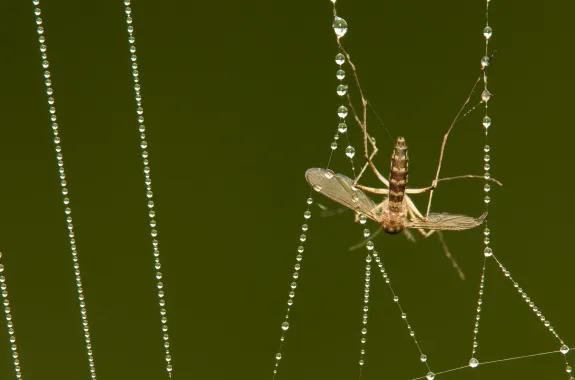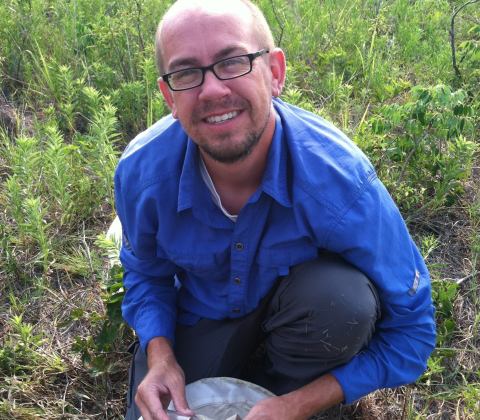Grade Level
3 - 5
minutes
15 min - 1 hr
subject
Life Science
Activity Type:
Chances are, you’ve run into more than a few spiders in your life, perhaps hanging out in a web near your front door, or skittering across a plant in your yard. Spiders live in almost every habitat on the planet, so it’s not unusual to find them in the forest or near the sea. And while spiders might make some people cringe, hopefully you’ll find them fascinating after learning a little bit more about how important they are to the earth’s ecosystems.
Spiders are obligate predators, meaning they must eat other animals to stay alive. They’re also generalist consumers, which is another way of saying that they prey on a variety of organisms, including other spiders, vertebrates (rarely), and their most common prey type, insects. It is estimated that one spider can eat as many as 2,000 insects in a year. Because of their broad appetite, many spiders play an important role in their communities by regulating the density of other invertebrate herbivores and predators. When you account for the variety of food types they consume and their sheer abundance, spiders are some of the most important invertebrate predators in terrestrial ecosystems.
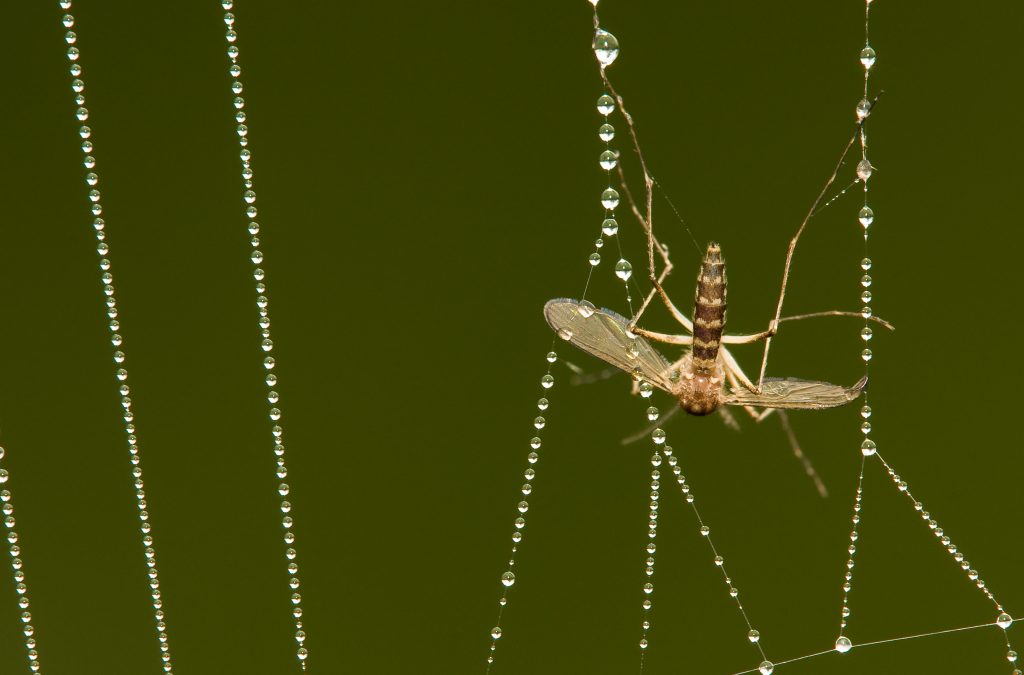
There is an ancient proverb: “The enemy of my enemy is my friend.” Spiders are our friends! They eat many insects that pester or even harm humans, including mosquitoes that can transmit deadly diseases like Zika virus, West Nile virus, malaria, dengue, and yellow fever. In fact, two species of jumping spiders, Evarcha culicivora and Paracyrba wanlessi, are known as “mosquito terminators,” preferring to eat mosquitoes over other prey. Spiders that prey on mosquitoes directly lower the numbers of these pests, and can help reduce the spread of mosquito-borne disease.
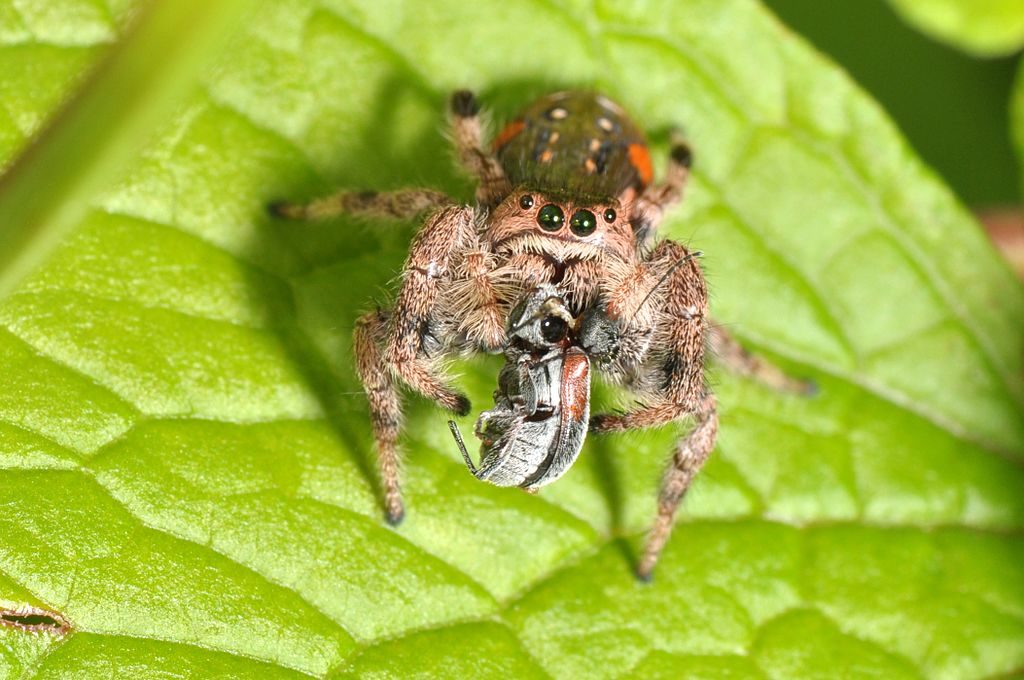
Spiders also indirectly benefit humans by consuming agricultural pests—including aphids, grasshoppers, leafhoppers, beetles, and caterpillars—that feed on the fruits, leaves, stems, and seeds of crops that we harvest for food. Reductions in pest abundance by spiders have led to decreased crop damage, which can help increase yields.
Farmers spend billions of dollars annually in the United States on pesticides designed to destroy weeds and insect pests. Unfortunately, pesticide use has also been shown to impact spider abundance in fields. Pesticides that reduce spider numbers could therefore result in an unintentional resurgence of pests.
Discussion Questions:
- What kinds of organisms are harmful to a farmer’s crops? Why?
- Which organisms are natural enemies to the crop pests that you just identified?
- If one insect herbivore can eat two cobs of corn per growing season, and one spider can eat five of those corn-eating insect herbivores, how many cobs of corn could one spider save humans in a growing season?
- Explain why conserving spiders can actually help humans.
Though all spiders make silk, only some spiders use their silk to construct webs for capturing prey. Some spiders actively hunt for their food, including two of the more recognizable families: wolf spiders (Lycosidae) and jumping spiders (Salticidae). The spider species that use webs to hunt prey create webs of an assortment of shapes and sizes (Figure 3). Some webs are sticky and trap insects that fly into them, while others simply allow the spider to detect (through vibrations) prey items walking across, enabling the spider to subsequently capture them. Web-building is an adaptation that helps spiders catch a variety of insects, including flying and ground-dwelling insects, more efficiently.
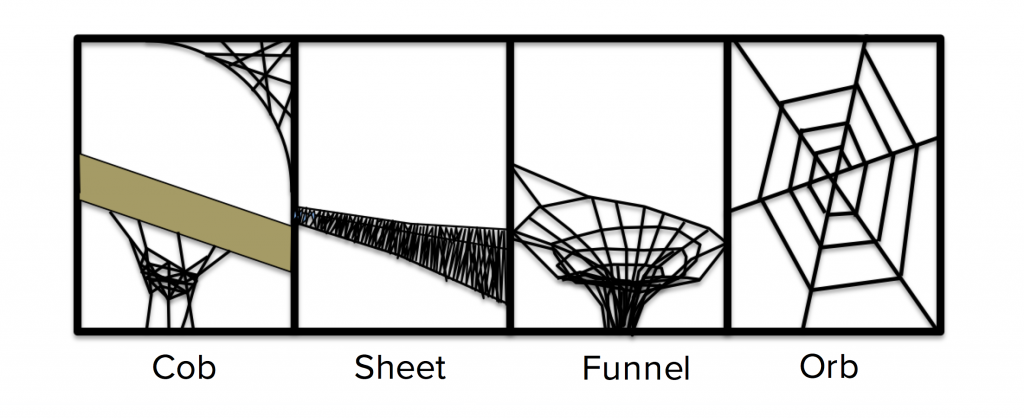
In this activity, students will design and construct their own webs out of yarn and paper plates, test how effective they are at capturing Ping-Pong “pests,” and then see how the removal of pests affects crop yield (in the form of candy). The goal of this activity is to give students an appreciation of the importance of spiders to ecosystems and to humans.
Create and Test a Spider Web
Each student will make and test how effective a paper plate web is at catching prey. This design challenge will engage students with the concept of a web, and how spiders use webs to catch prey.
Activity Supplies
- Paper plates (one per student)
- Knitting yarn (one roll, any color)
- Tape
- Scissors (enough to share between students)
- Paper hole punch
- Ping-Pong balls (6 pack)
- Self-stick Velcro, dots or thin strips (preferred), one package
- Popcorn prize (any edible prizes like popcorn or candy corn that symbolize crops will work)
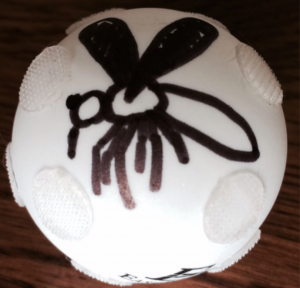
Make the prey items (before class)
Place either thin strips of Velcro or Velcro dots onto Ping-Pong balls so that the Velcro is evenly spaced around the ball. The Velcro on the Ping-Pong balls will stick to the yarn webs students make in this activity to simulate how insects stick to the sticky silk fibers of spider webs. You may draw insect designs on the Ping-Pong balls for added fun. These Ping-Pong balls will be your “agricultural pests.”
Create a Spider Web
Create a spider orb web using a paper plate and yarn (your “silk”) by following the directions below.
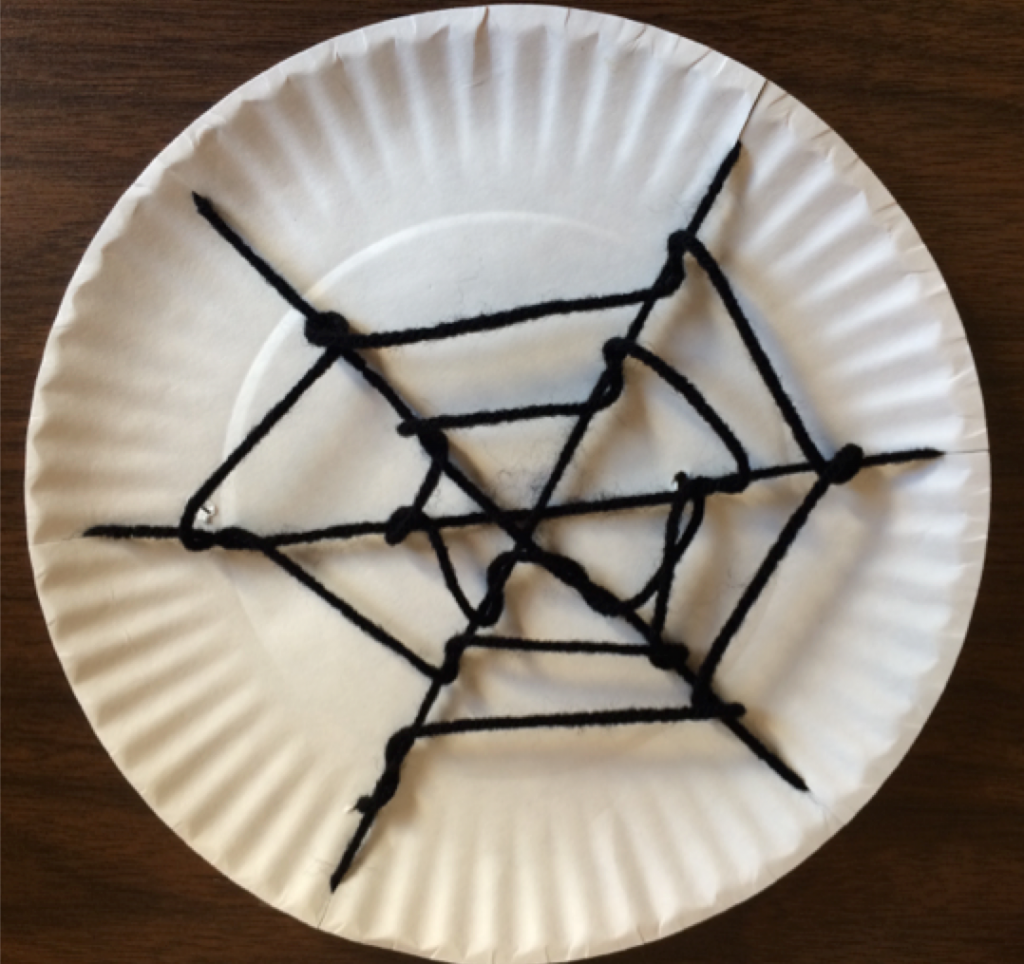
- Make six ½-inch cuts equally spaced around the outside of a paper plate. These cuts will hold the “spokes” of the spider web.
- Cut three pieces of yarn into ~ 12 inch-long strips. Stretch one strand at a time between two of the cuts on the outside of the plate that are opposite each other, and tape the ends of the yarn on the backside of the plate. Do this for all three strands so that all the cuts have a string through them. These are the “radial spokes” of the spider web. You should have something that looks like an asterisk.
- To make the spiral “catching threads” of the web, start by punching a hole in the plate directly behind one of the spokes, toward the center. Run one end of a longer strand of yarn through that hole and tape the end of the strand to the back of the plate. Slowly work your way toward the outside of the plate, wrapping the strand once around each spoke as you go, forming a hexagon. Once you reach the original spoke with the hole, wrap your strand around the spoke, and run the other end of the strand through the hole.
- Tape the end of the circling strand to the backside of the plate once you have adjusted the tightness and placement of the crossbars. If needed, you can tape several junctions to keep them in place (note that tape will reduce the “stickiness” of the web, since Velcro doesn’t stick to the smooth tape surface).
- Repeat steps 3 and 4 for the inner ring of crossbars.
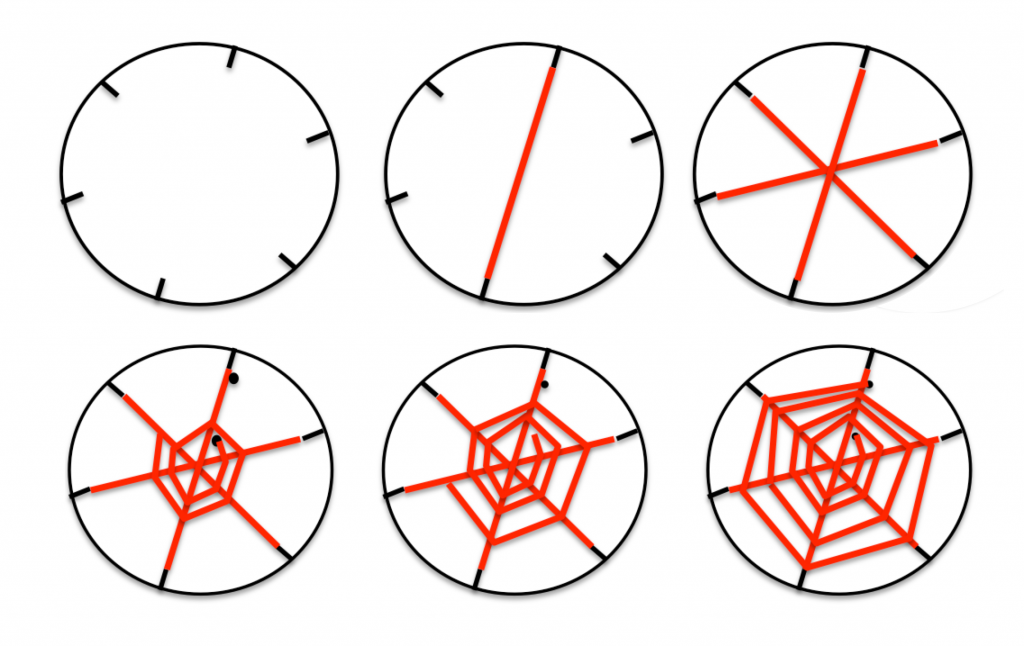
Capture Prey With the Webs
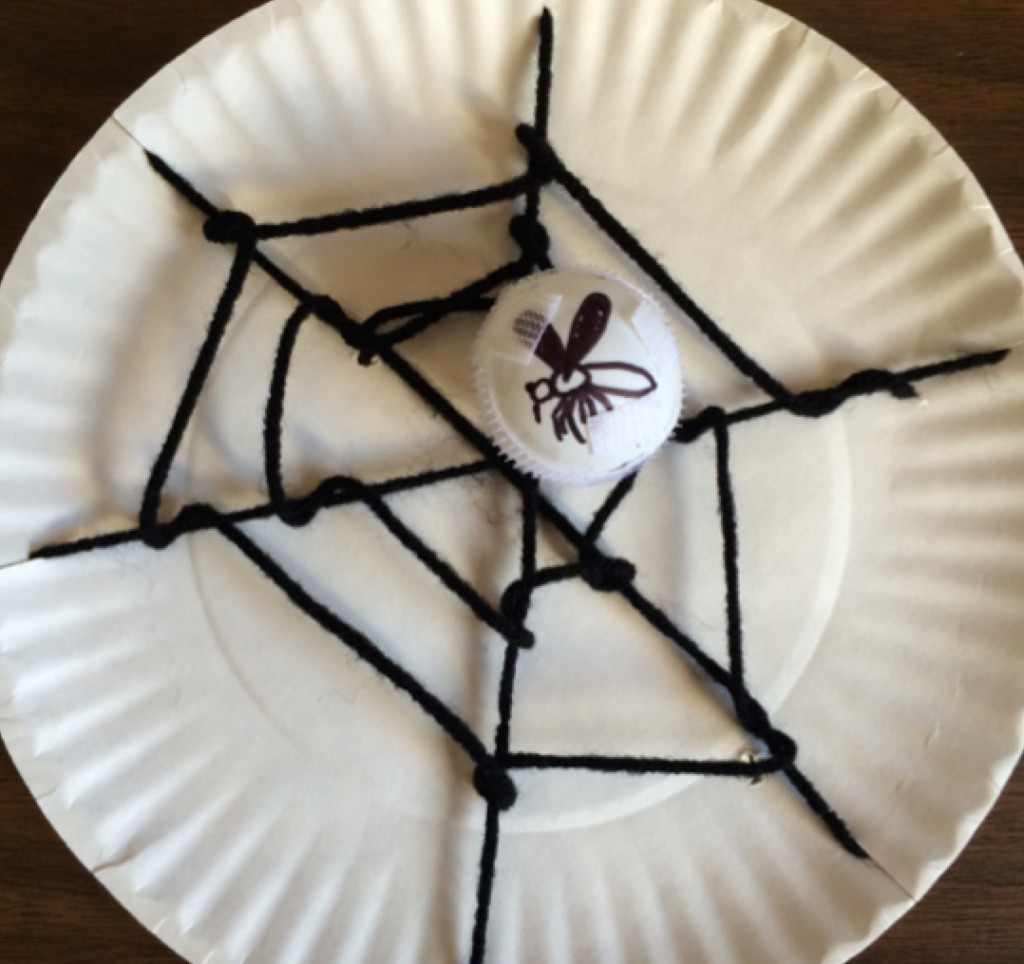
- Have each student stand four feet away from their web and gently toss five prey items at their web.
- For each prey item that gets caught in their web (Figure 5), the student receives a prize of three pieces of popcorn*.
*Any candy or snack will work as a prize; we chose popcorn because it represents a crop that is normally harvested and affected by agricultural pests, but fun snacks work, too! Make sure to point out that more prey captured by spider webs results in a larger “harvest.”
Design a Better Spider Web
Challenge students to design a spider web that is better at catching prey, given a limited amount of “silk” for constructing the web. Students can use this spider web design worksheet to sketch out and evaluate their design.
Using the web-making and prey-capture protocols above, students can create and test an endless variety of web designs. Encourage them to use the webs of real spiders for inspiration by searching for different spider web designs on the Internet (check out this resource on spider web construction). Next, challenge them to come up with a web that is the best at catching prey. In order to keep the challenge fair, you must standardize a few features.
- There must be at least four silk anchor points to the outside of the plate
- All students will be limited to 60 inches of silk
- Every silk strand must be connected (looped or taped) to another strand on at least one end
Have students collect “data” on how effective their web was at protecting crops, using the catching prey game rules above. Compare students’ data for different web designs and make conclusions on the most effective web design.
Post-Activity Discussion Questions
- What does the popcorn prize represent? Why did you receive more popcorn for every insect caught in the spider web? What real-life interaction and process does this game represent?
- When farmers spray insecticide on fields to kill insect pests, spiders are also killed. How does this affect the community’s natural way of controlling the numbers of insect pests?
- In a crop field, where are the different locations that you might find spider webs? How do you think the location (e.g. higher vs. lower) and orientation (e.g. vertical vs. horizontal) of different web types affect the kinds of insects that it will capture?
- Which spider web designs were the most effective among the designs created in your class? Which features of those handmade webs made them better at catching “prey?” Are these features found in natural spider webs? If not, why do think this is the case?
- Which threads in your web caught the most insects? In spider orb webs, like the ones you made in this activity, not all of the silk threads are sticky—only the spiral threads are. How could you make your web reflect this reality, and would you expect your web to catch more or fewer insects?
Useful Vocabulary
Adaptation – a trait that has evolved to improve an organism’s ability to survive and/or reproduce in their environment
Community – a group of potentially interacting species in a given area
Consumers – organisms that must get their energy by consuming other organisms
Ecosystem – a biological community of organisms and their physical environment
Food web – a diagram representing consumer interactions that occur in a community
Generalist – an organism that consumes a variety of different food types
Photosynthesis – the process that plants use to convert sunlight energy into food energy
Predator – an organism that eats other animals as food for its energy needs
Producers – organisms that can get their energy from the energy in sunlight or chemical bonds.
Specialist – an organism that consumes only a specific food type
Trophic level –organisms in a community that get their energy from a common level in a food chain or food web.
References
Haughton, A. J., Bell, J. R., and Boatman, N. D. 1999. The effects of different rates of the herbicide glyphosate on spiders in arable field margins. The Journal of Arachnology 27:249-254.
Jackson. R. R., & Cross, F. R. 2015. Mosquito-terminator spiders and the meaning of predatory specialization. Journal of Arachnology 43:123-142.
Maloney, D., Drummond, F. A., and Alford, R. 2003. Spider predation in agroecosystems: Can spiders effectively control pest populations? Maine
Agricultural and Forest Experiment Station Technical Bulletin: 190.
Tanaka, K., Endo, S., and Kazano, H. 2000. Toxicity of insecticides to predators of rice planthoppers: Spiders, the mired bug and the dryinid wasp. Applied Entomology 35:177-187.
Walker, C. 2010. Spider sense: fast facts on extreme arachnids. National Geographic News. October 28, 2010. Accessed July 14, 2015.
The activity is free of charge to all educators. The original activity, along with community ecology supplements and additional activities can be found here.
The Kansas Department of Wildlife, Parks and Tourism provided financial support for the development of this activity through the Chickadee Checkoff small grant program dedicated to nongame wildlife conservation. All I ask is that you please give me credit for the developing the activity and if possible, please let me know if you have used it and how it went via email (wilgersd “at” mcpherson”dot” edu). Please feel free to provide any feedback on these activities so they can be modified/improved for future users.
Educator's Toolbox
Meet the Writer
About Dustin Wilgers
Dustin Wilgers is an Assistant Professor of Biology at McPherson College in McPherson, KS. With the help of Kansas Department of Wildlife, Parks, and Tourism he enjoys developing fun educational activities that work towards improving scientific literacy by engaging kids with some of the most feared and misunderstood creatures.
